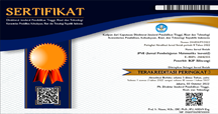ANALISIS KESALAHAN SISWA KELAS IX DI MTS NEGERI KOTA CIMAHI DALAM MENYELESAIKAN SOAL LINGKARAN BERDASARKAN KATEGORI KESALAHAN MENURUT WATSON
DOI:
https://doi.org/10.22460/jpmi.v3i3.p%25pKeywords:
Circle, Error According to WatsonAbstract
This study aims to analyze the errors of grade IX students in MTs Negeri Cimahi in solving circle problems, 32 students, and 6 random samples were taken. The research approach used is qualitative research with descriptive methods. The research instrument used in the test is based on bloom's taxonomy on the dimensions of cognitive processes that begin with C1-C6, where C1 is remembering, C2 is understanding, C3 is applying, C4 is analyzing, C5 is evaluating and C6 is creating. The test is examined based on the type of error Watson category and an analysis of student answer errors. The results showed that the type of error that was very high was 60% in the Above Other / AO type. Then for Omitted Data / OD errors, including a low error of 20%. Types of errors in Inappropriate Data / ID included in the low error that is equal to 13% and the last type of errors in Inappropriate Procedure / IP including very low errors of 7%. While the types of Response Level Conflict / RLC, Undirected Manipulation / UM, and Skills Hierarchy Problem / SHP errors are 0%, respectively, including very small errors. The cause of students making mistakes in solving circle problems based on the Watson category errors is the lack of understanding of the concept of the material being taught, students cannot solve problems according to the solution procedures and the lack of accuracy of students in working on given problems.
References
Gusniwati, M. (2015). PENGARUH KECERDASAN EMOSIONAL DAN MINAT BELAJAR. 5(1), 26–41.
Hadi, S., & Radiyatul, R. (2014). Metode Pemecahan Masalah Menurut Polya untuk Mengembangkan Kemampuan Siswa dalam Pemecahan Masalah Matematis di Sekolah Menengah Pertama. EDU-MAT: Jurnal Pendidikan Matematika, 2(1), 53–61. https://doi.org/10.20527/edumat.v2i1.603
Layn, R., & Kahar, S. (2017). Analisis Kesalahan Siswa Dalam Menyelesaikan Soal Cerita Matematika. Jurnal Math Educator Nusantara, 03(02), 94–102.
Lestari, A. P., Hasbi, M., & Lefrida, R. (2016). Analisis Kesalahan Siswa Kelas Ix Dalam Menyelesaikan Soal Cerita Keliling Dan Luas Lingkaran Di Smp Al-Azhar Palu. Jurnal Elektronik Pendidikan Matematika Tadulako, 3(4), 373–385.
Maharani, S., & Bernard, M. (2018). Analisis hubungan resiliensi matematik terhadap kemampuan pemecahan masalah siswa pada materi lingkaran. 1(5), 819–826.
Marlina, L. (2013). Penerapan langkah polya dalam menyelesaikan soal cerita keliling dan luas persegi panjang. Jurnal Elektronik Pendidikan Matematika Tadulako, 1(1), 43–52.
Munawaroh, N., Rohaeti, E. E., & Aripin, U. (2018). Analisis Kesalahan Siswa Berdasarkan Kategori Kesalahan Menurut Watson dalam Menyelesaikan Soal Komunikasi Matematis Siwa SMP. JPMI (Jurnal Pembelajaran Matematika Inovatif), 1(5), 993. https://doi.org/10.22460/jpmi.v1i5.p993-1004
Oktaviani, R., Salbiah, A. O., Hidayat, W., & Rohaeti, E. E. (2019). Linear Satu Variabel Berdasarkan Kategori. 2(3), 133–142.
Rahayu, S. (2012). Pengaruh Pendekatan Realistic Mathematics Education Terhadap Pemahaman Konsep Matematika Siswa Kelas Vii Madrasah Tsanawiyah Hasanah Pekanbaru.
Romansyah, F., Matematika, J. P., & Riau, U. (2018). Profil pemahaman konsep siswa sekolah dasar dalam menyelesaikan soal luas dan keliling lingkaran. 2, 1703–1709.
Yusuf, A., & Fitriani, N. (2020). MENYELESAIKAN SOAL PERSAMAAN LINEAR DUA VARIABEL DI SMPN 1 CAMPAKA MULYA-CIANJUR. 3(1), 59–68. https://doi.org/10.22460/jpmi.v3i1.p59-68

















